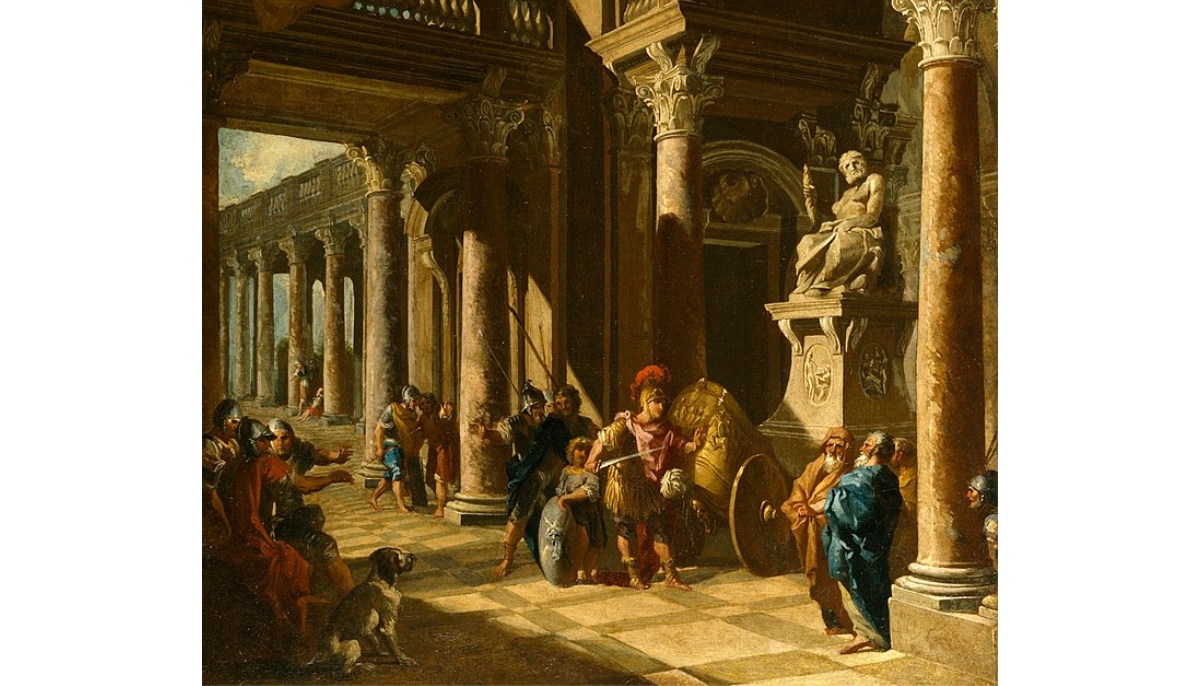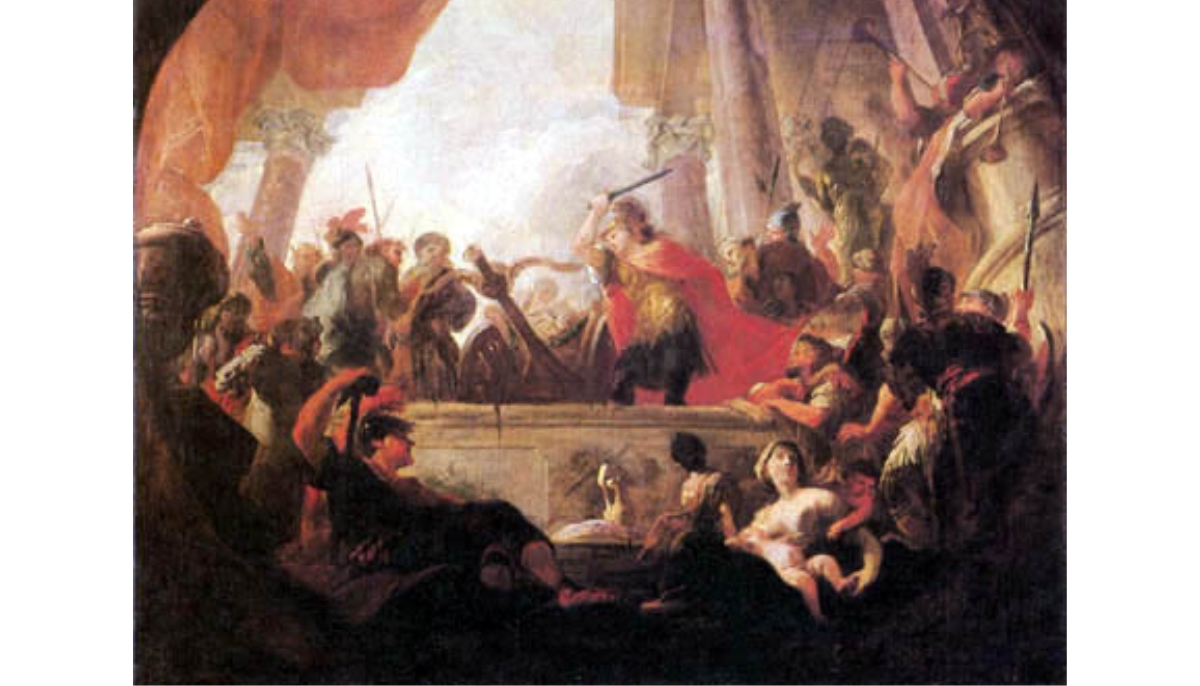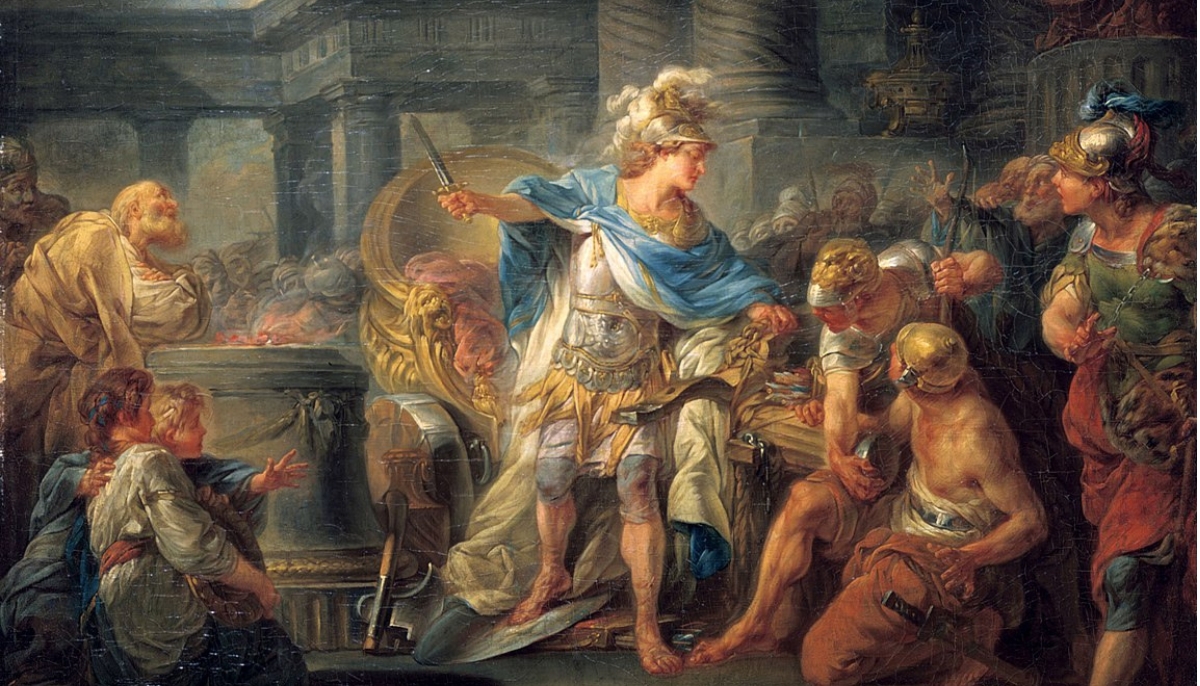For ages, the tale of Alexander and the Gordian Knot has been a staple in discussions about ingenious problem-solving and audacious leadership.
This legendary story not only bolsters Alexander the Great’s reputation but also offers timeless lessons on tackling challenges.
In this article, we’ll dissect the historical context, multiple versions of the tale, and its modern-day relevance, and even explore whether the Gordian Knot was real.
The Historical Roots of the Gordian Knot Myth
The Gordian Knot originates in the ancient region of Phrygia, which is part of present-day Turkey.
During a period when Phrygia lacked a ruler, an oracle at Telmissus—then the capital of Lycia—issued a prophecy that would profoundly shape the region’s future.
According to this oracle, the next man to enter the city driving an ox-cart was destined to become king. In fulfillment of this prophecy, a peasant farmer named Gordias arrived in an ox-cart and was promptly anointed as the king of Phrygia.
The Role of Gordias’ Son Midas in the Legend
In a show of gratitude, Gordias’ son, Midas, dedicated the ox-cart to the Phrygian god Sabazios, a deity later equated with the Greek god Zeus.
To make the offering complete, Midas secured the cart with a knot crafted from cornel bark, creating the now-famous Gordian Knot.
This knot was so intricately designed that Roman historian Quintus Curtius Rufus described it as a tangle “so tightly entangled that it was impossible to see how they were fastened.“
Prophecies and Oracles: Cornerstones of Ancient Cultures
Oracles and prophecies held immense importance in ancient times, not just for the Phrygians but also for Alexander the Great. The Oracle of Siwa in Egypt, for example, was one of the sites Alexander visited to seek divine guidance.
This oracle was dedicated to Zeus-Ammon, a fusion of the Greek god Zeus and the Egyptian god Ammon. Alexander considered the advice from such oracles vital for his military campaigns and his destiny as a ruler.
Alexander the Great and the Gordian Knot: The Prophecy Revisited

By the time Alexander the Great arrived in Gordium in 333 BC, Phrygia had lost its former glory and became a satrapy of the Persian Empire. Yet the Gordian Knot remained, housed in the palace of the erstwhile Phrygian kings.
Alexander, well-versed in its history and significance, understood the enormous implications of untying the knot. An oracle had stated that whoever could untangle this complex knot would become the ruler of all of Asia.
Understanding the power and significance of oracles, Alexander saw this as a challenge he needed to conquer. This was more than a simple task; it was a destiny-defining moment for him. Successfully untying the knot would not just validate ancient prophecies but also significantly bolster his stature as a destined ruler and a capable problem-solver.
In taking on this challenge, Alexander aimed to accomplish more than just a military victory. He was seizing an opportunity to achieve a symbolic triumph, fulfilling not just one but two prophecies: the Phrygian oracle that foretold the importance of the Gordian Knot and the Oracle of Siwa that affirmed his divine right to rule.
In untying the knot, Alexander linked his destiny with that of ancient legends and prophecies, elevating his historical and symbolic importance to unprecedented heights.
Two Accounts of How Alexander Solved the Gordian Knot

The story of Alexander the Great and the Gordian Knot is not a singular tale but one with two distinct interpretations.
The Forceful Cut
One popular narrative argues that Alexander, stumped by the complex knot, drew his sword and sliced it apart—this daring approach to problem-solving generated much debate over its legitimacy.
However, it cemented Alexander’s standing as a leader, unafraid to defy conventional wisdom to pursue his objectives.
The Intelligent Unraveling
A contrasting account posits that Alexander tackled the Gordian Knot by careful examination. He discovered that a linchpin held the yoke of the ox-cart together.
Upon removing this linchpin, he disassembled the yoke, untangling the knot’s ends. This clever method demonstrated his ability to strategize and problem-solve in intricate situations.
Is the Gordian Knot Real?
While no physical evidence has been found to validate its existence, the story has roots in ancient texts and folklore.
Some historians argue that it could be a parable or an allegorical tale. Others consider it possible that a knot of such complexity could have existed, but its reality remains unconfirmed.
The Moral of the Gordian Knot
The moral of the Gordian Knot story varies depending on which version you consider. In the version where Alexander cuts the knot, the moral is that unconventional thinking and audacious action can solve problems that appear insurmountable.
In the unraveling version, the moral emphasizes the importance of analytical thinking and insight in problem-solving.
In both interpretations, the overarching lesson is that creativity, courage, and ingenuity are vital for overcoming challenges.
The Gordian Knot in Modern Context
In contemporary times, the Gordian Knot has evolved into a universal metaphor for intricate problems that require innovative solutions.
The expression “cutting the Gordian Knot” is often used in business and intellectual contexts to describe bold, decisive actions for resolving complex issues.
The story thus serves as a lasting testament to the power of thinking differently.
Regardless of whether the knot is actual or metaphorical, the essence of the story is about facing challenges head-on and utilizing ingenuity to find solutions.
The tale, etched in history and lore, is an enduring lesson for problem-solvers in every era.






